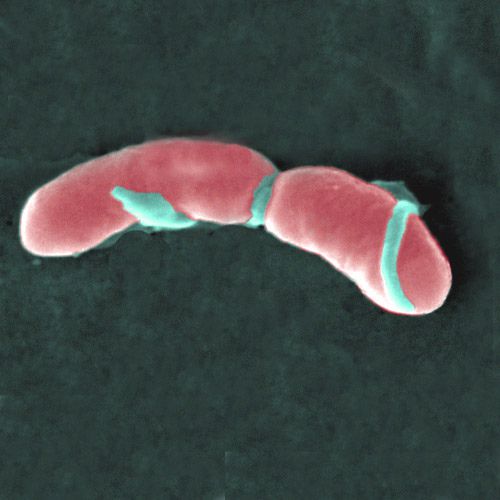-
 Variability in heart rate
Variability in heart rate
-
 Configuration space
Configuration space
-
 Monounsaturated fatty acid
Monounsaturated fatty acid
-
 Lactic acid
Lactic acid
-
 Granulopenia
Granulopenia
-
 Disruption
Disruption
-
 Giant sequoia
Giant sequoia
-
 Tidal bore
Tidal bore
-
 Permafrost
Permafrost
-
 PLC
PLC
-
 Lamellar
Lamellar
-
 Hydrolase
Hydrolase
-
 Mesosphere
Mesosphere
-
 HiPER
HiPER
-
 Internal energy
Internal energy
-
 Geoengineering
Geoengineering
-
 Focus
Focus
-
 Shoemaker-Levy 9 comet
Shoemaker-Levy 9 comet
-
 Protocol
Protocol
-
 STED microscopy
STED microscopy
-
 Sporangium
Sporangium
-
 Deficiency
Deficiency
-
 Isotropic
Isotropic
-
 Selecting
Selecting
-
 Partition wall
Partition wall
-
 Pager
Pager
-
 Ocean turbine
Ocean turbine
-
 Blood
Blood
-
 Oven
Oven
-
 Ubiquitin
Ubiquitin
Listeria
Listeria monocytogenes bacterium causes listeriosis, a rare but serious infectious disease.
Characteristics of Listeria
Listeria monocytogenes is a mobile Gram positive bacterium which does not produce spores. The cell is 1 to 4 micrometres long and 0.5 micrometres wide and forms short chains or small clusters.
Its genome is composed of a chromosome containing approximately 3 million base pairs that code 3,000 proteins.
The bacterium can grow in the presence or absence of oxygen (facultative anaerobe) between 1°C and 45°C,. It is relatively resistant to salt and drying and is easily destroyed by heat.
Listeria and listeriosis
These features explain why it can survive for long periods of time in the environment and in animal and human cells and grow slowly at food refrigeration temperatures (4°C). In adittion, it can cross the placenta and enter the central nervous system (meningo-encephalitis).
The virulence genes are coded by a well-defined chromosomal region. Despite listeria being sensitive to most antibiotics which are effective on Gram positive bacteria, the mortality rate is as high as 20 to 30% and leaves neurological complications in 40% of cases.
 The Listeria monocytogenes bacterium is the agent responsible for listeriosis. © AJC1, Flickr, CC by-nc 2.0
The Listeria monocytogenes bacterium is the agent responsible for listeriosis. © AJC1, Flickr, CC by-nc 2.0
Latest
Fill out my online form.



